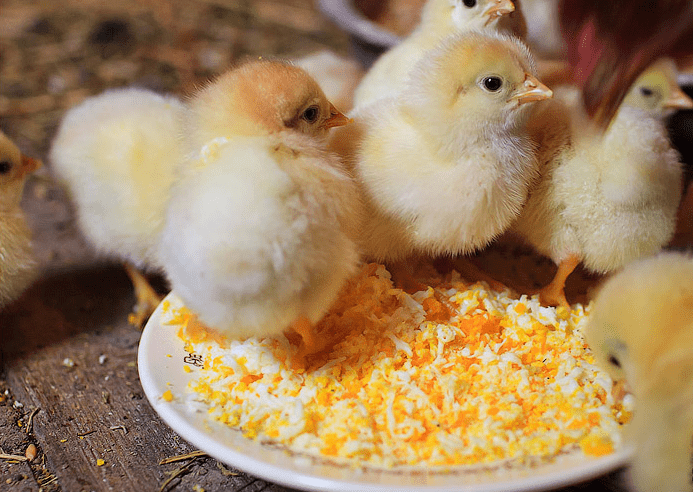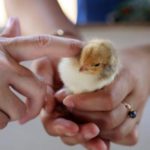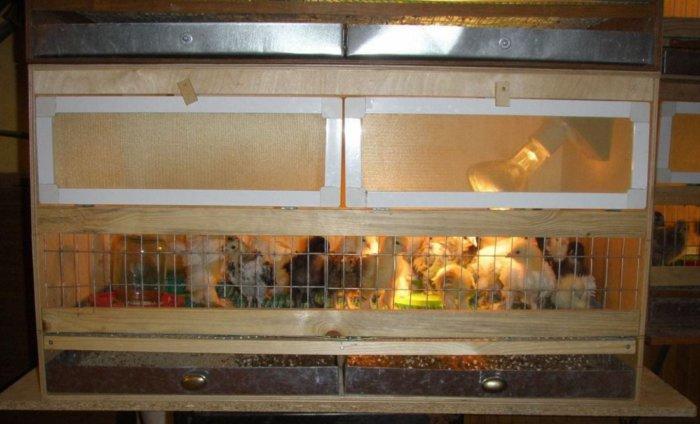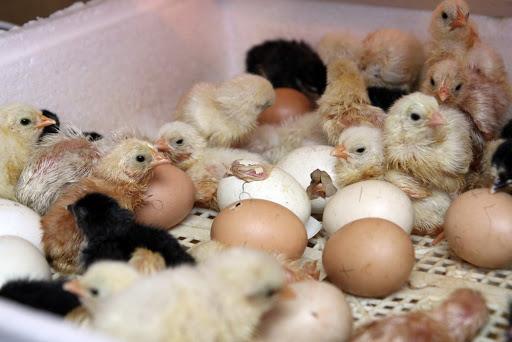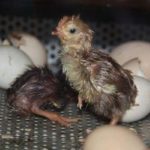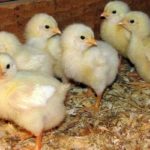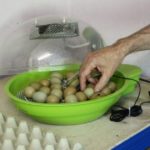Buying day-old chicks is much cheaper than buying grown-up young animals, but beginning poultry farmers often fear the death of the purchased stock. After all, babies require special attention. Knowing the rules for caring for day-old chicks will allow you to raise chickens without problems, significantly saving your budget, and getting healthy and productive birds in your own backyard.
Selection of healthy offspring
It is better to buy chicks in the spring, from mid-April. Warm weather and green grass will allow the young to grow stronger faster.They are purchased from breeding farms or from trusted producers, otherwise there is a danger of mass death of the purchased birds.
You should carefully inspect the chickens before purchasing. Healthy chicks are active, they squeak, immediately respond to sound, and turn their heads with curiosity. To check the birds, you can lightly tap the box in which the babies are located with your finger. They have clear eyes, uniform, dry and soft fluff.
The babies are lifted and the tummy is felt; it should be soft, this means that the chicken has completely used the necessary substances from the egg. Inspect the cloaca; it should be pink, clean, without traces of mucus. Chickens are stable on their legs.
Hens and cockerels are selected by examining the cloaca. Do this carefully, without harming the chicken or causing it pain. In bettas, a small bump will be noticeable. The second way to determine the sex of the baby is to turn it over while holding it by the paws. It is believed that the hen will pull her head to her chest, while the cockerel will simply hang with her neck stretched out.
After purchasing, the babies must be delivered home. A cardboard or plastic box with holes for ventilation is suitable for transportation. Place soft cloth or paper, a disposable absorbent diaper or hay at the bottom. If the distance is short, the chicks are fed and watered at home.
What to feed day-old chicks?
Chicks should receive a balanced diet. The baby's diet consists of:
- hard-boiled, finely chopped yolk;
- fresh cottage cheese;
- finely ground cereals (semolina, oatmeal crushed in a coffee grinder, corn grits are suitable).
Cereals are added so that the yolks and cottage cheese do not stick together into lumps. The food should be crumbly. Babies are fed every 2 hours, even at night. The grains in the mixture should be changed.For example, first semolina is added to the feed mixture, after 2 hours - the yolk with cottage cheese and ground corn, then with oatmeal. To teach the chicks to peck, the mixture is gradually shaken off the tip of a knife. Chickens quickly understand what needs to be done.
You can use ready-made feed with vitamins and prebiotics. The granules are small, optimal for chickens and contain a complex of necessary elements. It is called “zero”, or starting.
From 5-6 days, finely chopped green onions, nettles, grated carrots and fish oil, 0.1 grams per chick, are added to the diet. There should always be clean water in the drinking bowls; care must be taken that the chicks cannot get their paws into it. You should drink boiled water; you can add a couple of crystals of potassium permanganate (potassium permanganate) to it. The solution will take on a faint pink color.
Lighting and air temperature when raising chickens
In the first days, chickens need lighting and additional heating around the clock, because they do not yet have normal thermoregulation, and they freeze even in a warm room. Drafts are harmful for children.
For lighting and heating, chicks are placed in a brooder or kept in a box under a lamp. The temperature from days 1 to 7 is 34-35 °C. It is necessary to care for the chicks and constantly monitor their well-being; if they huddle together, it means that the heating is insufficient; when they breathe heavily and spread their wings, you need to reduce the temperature. The chickens are heated with an infrared lamp.
Preparing to keep chickens
Depending on the number of chickens and the capabilities of the poultry farmer, various habitats are organized for the kids.
In boxes
This is how novice poultry farmers keep chicks or if there are not too many babies. The box with the birds is placed in the warmest place, away from drafts. A lamp is installed above it for lighting and heating.
Important: the chicks should not be crowded, because then stronger chickens can accidentally crush weaker relatives.
Place soft paper or fabric on the bottom of the box. Change when dirty, several times a day. Drinkers and feeders are also placed there. Babies' paws and fur should not be wet.
In cells
Special chicken cages are called brooders. They are equipped with heating and a lamp for lighting. The design can be purchased or made independently. The brooder is equipped with a tray, which makes the cleaning process easier. The cell is divided into several compartments. Usually one of them contains strong, active chicks, the second contains weakened chicks. Sick children are placed separately.
The cage is equipped with drinkers, feeders, and perches for older chickens. Chicks can come under the lamp to warm themselves or move away if they feel hot. In the brooder, chickens are kept in the cool season until they are one month old, and in the warm season - 3 weeks.
On bedding
Raising chickens on deep, permanent litter allows the flock to move freely, and the birds grow up active. Sawdust, peat, and sunflower husks are used for bedding. Its components should be crumbly. For heating, a reflector is installed and illuminated with ordinary lamps.
This type of keeping is advisable when there are a significant number of chicks. The litter is periodically added; it should not be damp or dirty.Its thickness is 10-15 centimeters. The floor under the bedding is concreted or treated with lime. Perches are provided for older chickens.
Raising pets under a hen
This way, chicks are produced less frequently than in an incubator. There are several reasons for this:
- not all hens make good brood hens;
- chickens stop laying eggs;
- show aggression towards other residents of the chicken coop;
- can crush eggs and chicks.
For incubation, a calm hen of 2-3 years is chosen. Fertilized eggs are collected over several days. 10-13 eggs are placed under the hen so that she can easily cover the clutch. Select even, smooth specimens of the same size; the chicks should hatch at approximately the same time.
A nest is built in a shaded corner. It is made from scrap materials. This is usually a box made of chipboard or plywood lying on its side. Be sure to build a small threshold 8-10 centimeters high so that the eggs do not roll out. Straw is placed at the bottom of the nest, and the hen herself lines it with feathers.
She should always have water and food nearby so that the hen does not leave the nest for a long time. The chicken hatches its chicks for up to 30 days. She trains and cares for the chicks herself. It is very interesting to watch this process.
Of course, there is a lot of fuss with little chickens. But this allows you to acquire the knowledge and experience necessary for a person who decides to start raising chickens in his own backyard.




